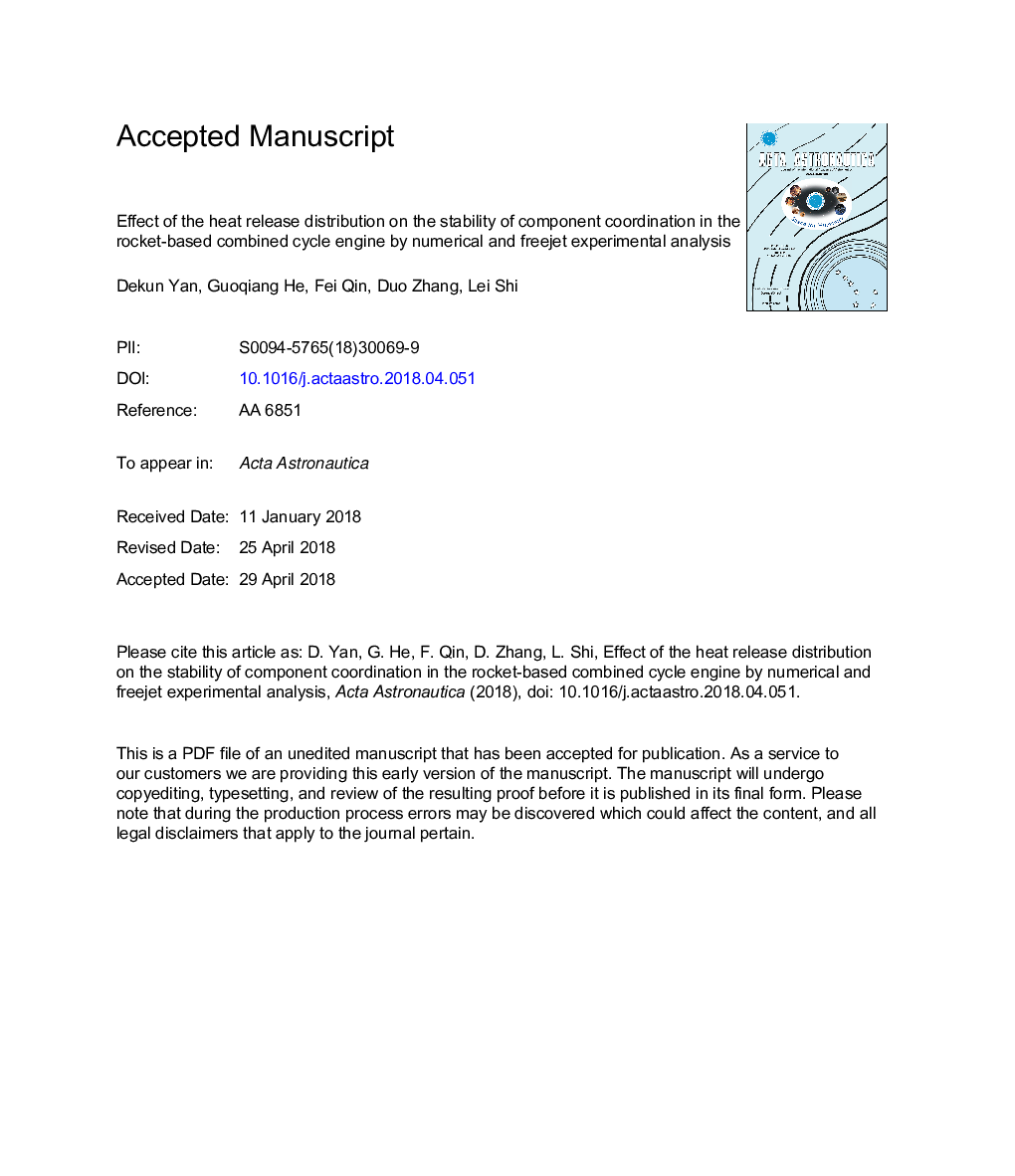| Article ID | Journal | Published Year | Pages | File Type |
|---|---|---|---|---|
| 11007254 | Acta Astronautica | 2018 | 38 Pages |
Abstract
Efficient combustion without damaging the inlet state is the key to achieve stable operation in the engine. In the present study, effect of the heat release distribution on the component matching is analyzed on an integrated rocket-based combined cycle (RBCC) model through three-dimensional numerical simulations and the freejet tests under Maââ¯=â¯4 and Maââ¯=â¯5 conditions. Numerical pressures are in good agreement with the experimental data. Results indicate that the increasing pre-combustion shock strength during the movement can balance the pressure difference between air intake and combustion effectively. In order to ensure inlet operation, the main combustion heat should be released in the back cavity under Maââ¯=â¯3 condition. Thus, the thermal choking can be controlled in the combustor exit to employ high-pressure combustion to generate thrust in the large expansion section. With the flight velocity increasing, the main combustion zone should be moved forward and control thermal choking in the less expansion region to improve the overall combustion efficiency. Through the matching between thermal choking and flow area, RBCC engine can achieve efficient operation from Maââ¯=â¯3 to Maââ¯=â¯6.
Related Topics
Physical Sciences and Engineering
Engineering
Aerospace Engineering
Authors
Dekun Yan, Guoqiang He, Fei Qin, Duo Zhang, Lei Shi,
